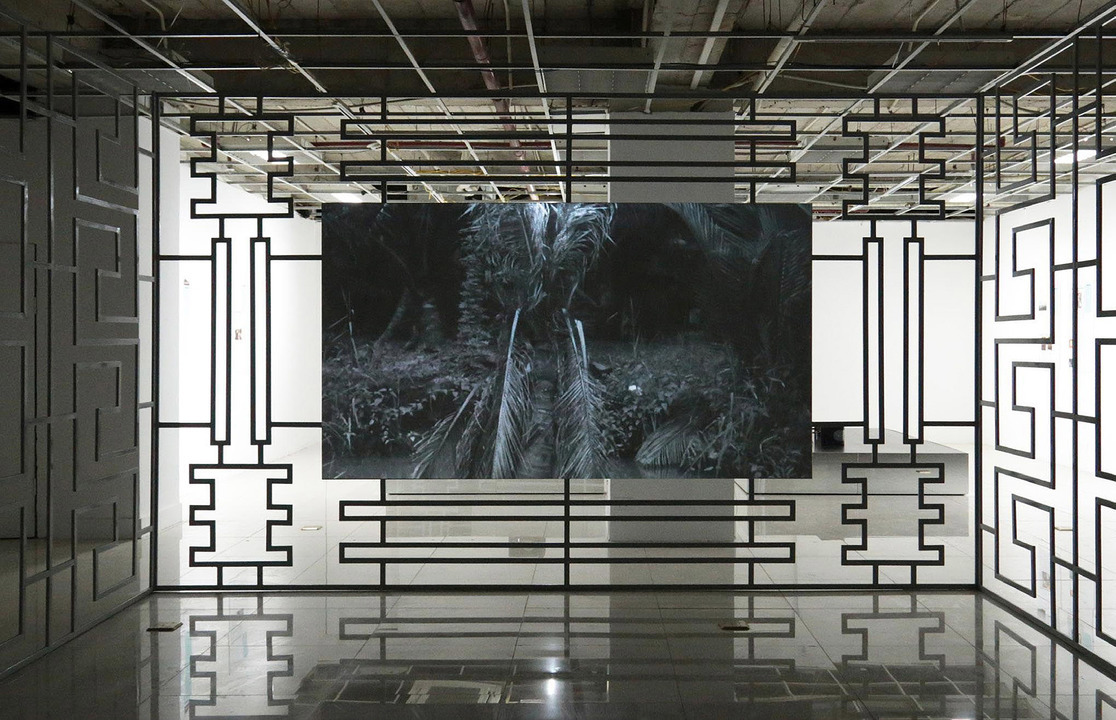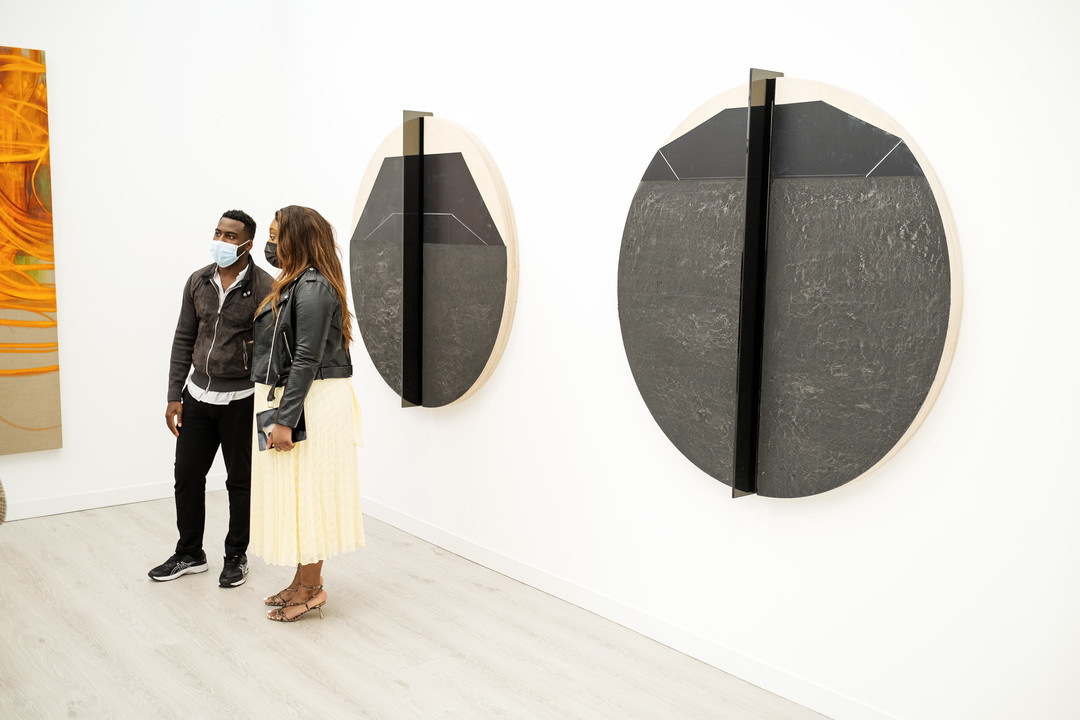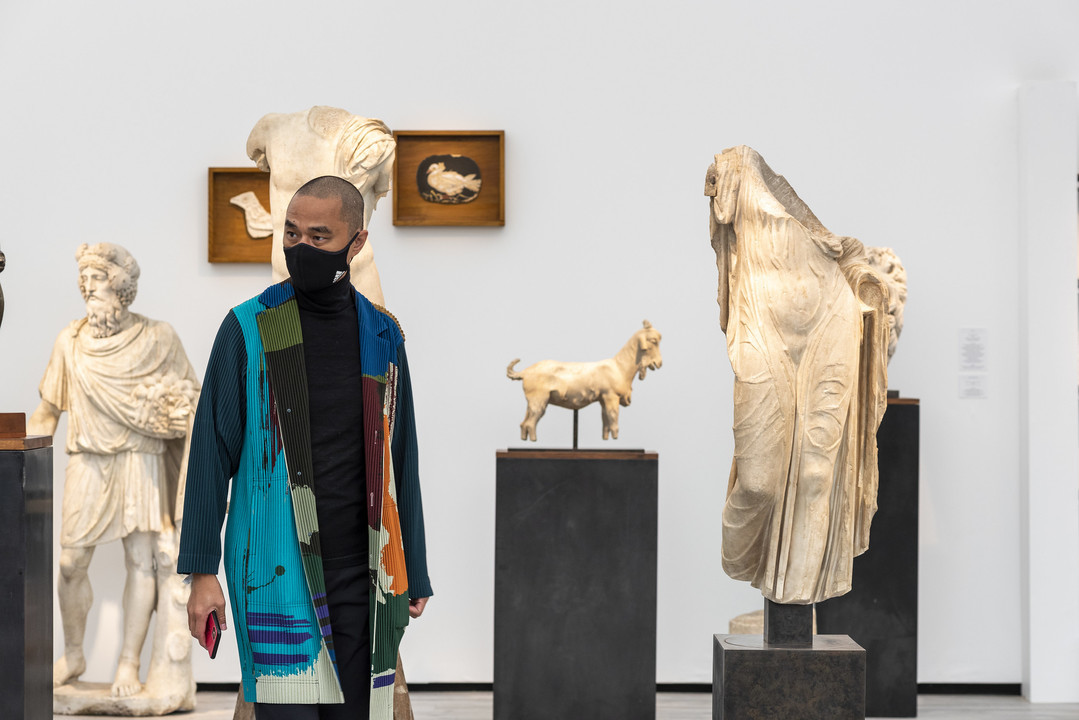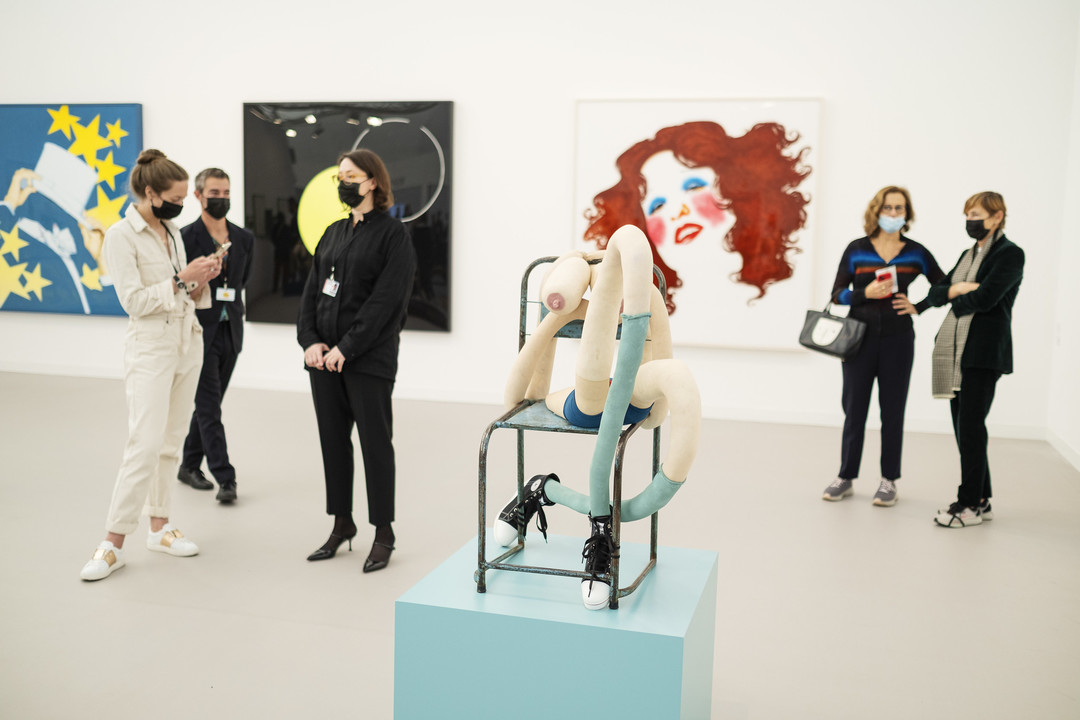Experiencing Frieze Week through the Lens of Digitisation
During the pandemic, Frieze pivoted to online channels to engage their audience and build community. As the London edition returns in real life, this commitment to digital innovation is here to stay, as we highlight the best exhibitions and events for you to experience.
Eva Langret, the innovative Director of Frieze London has stated that ‘elevating new voices’ is one of their key focuses. Both Frieze London and Frieze Masters have delivered diverse and inclusive programmes, but they have also embraced technology to ensure that participating galleries are heard.
As described by Nathan Clements-Gillespie, Director of Frieze Masters, ‘The pandemic marked a major shift, propelling the art world’s embrace of all things digital. Having witnessed extraordinary online engagement over the past eighteen months, we will undoubtedly continue to integrate a digital focus into our future fairs.’ Whether you have watched the Frieze Instagram Lives with fair curators and artists or tuned into Frieze Viewing Room, your experience of attending the fair in person has likely been enhanced by technology.
Having operated primarily as the Frieze Viewing Room during the pandemic, Frieze London and Frieze Masters have finally reopened live in Regent’s Park, London. Despite previous restrictions that prevented collectors from interacting in person, they were able to engage with galleries online, which offered a sense of community.
 Emalin, Frieze London 2021 © Linda Nylind
Emalin, Frieze London 2021 © Linda Nylind
Online sales have since surged across international art fairs, a trend that continued as both Frieze Los Angeles and Frieze New York returned live earlier this year. Limna is vital to collectors, because art data intelligence can support their decision-making. According to the pivotal UBS Art Market Report 2021, the online sales of international galleries, auction houses and art fairs have thrived as buyer confidence grows. As the report stated, ‘online sales doubled in value from 2019 to reach a record high of $12.4 billion. The figure represented a record 25% share of the market’s total value.’
As testament to its success, the Frieze Viewing Room is continuing to supplement the fair. All participating galleries are presenting their work online within Frieze Viewing Room with many offering digital exclusives. As described by Clements-Gillespie, ‘Perhaps the biggest benefit of OVRs is the increased reach – the inaugural edition of Frieze Viewing Room saw visitors from 156 countries, and of course there are no admission fees, again, this new level of accessibility further opens the fair up to new audiences.’
Many talks are streamed online, which widens their reach. Examples include Frieze London Talks, which evoke discussion and are curated by the luminary Jeppe Ugelvig. His conversation with British-Japanese artist Simon Fujiwara (b. 1982) is a particular highlight. Dr Nicholas Cullinan is leading the Frieze Masters Talks, which launched with his conversation with the British visual artist Tacita Dean (b. 1965).


At Victoria Miro (C09) in Frieze London, anticipation was building for their botanical-themed group exhibition, which includes the artist Inka Essenhigh’s (b. 1969) sci-fi and fantastical floral works. The exhibition includes evocative pieces by the British artist Idris Khan OBE (b. 1978) and Japanese artist Yayoi Kusama (b. 1929). As a forward-thinking gallery they work closely with cultural influencer Katy Hessell of @TheGreatWomenArtists by featuring their artists on her successful Spotify podcast.
Strategies like this have captured the imagination of digitally-engaged young collectors and helped to define their position as a leading gallery in the contemporary art market in London. According to the UBS Art Market Report 2021, ‘millennial HNW collectors were the highest spenders in 2020, with 30% having spent over $1 million.’
David Zwirner is renowned for their Dialogues podcast hosted by their Head of Content Lucas Zwirner, which is streamed through Spotify and offered unique access to art through the pandemic. The gallery is participating in Frieze London (B03) with the painter Kerry James Marshall (b. 1955), sculptor Carol Bove (b. 1971), and the young Colombian Oscar Murillo (b. 1986) amongst others. His evocative paintings are a powerful response to his experience of lockdown in La Paila and provide vital social context to Frieze reopening. At Frieze Masters (F10), David Zwirner presents work created from the 1940s by talented colourist Ad Reinhardt (1913-1967). The gallery’s dual focus on modern and contemporary art has ensured that every audience is engaged with as they move between the fairs this week.
 David Zwirner, Frieze London 2021 © Linda Nylind
David Zwirner, Frieze London 2021 © Linda Nylind
Another favourite is Timothy Taylor with their solo presentation of Brooklyn-based artist Honor Titus (b. 1989) at Frieze London (A18) showcasing paintings reminiscent of Alex Katz and Les Nabis. His inaugural exhibition in their New York space was met with critical acclaim as has his Instagram @honortitus, which has fast become a favourite of international collectors. At Frieze Sculpture, Timothy Taylor is presenting the unmissable British artist Annie Morris (b. 1978) alongside her eponymous solo exhibition at their nearby Mayfair gallery. During the pandemic, Timothy Taylor developed an Online Viewing Room, which archives previous exhibitions and offers collectors an immersive experience as well as the opportunity for direct enquiries. This contributes to break down the boundaries between the collector and gallery.
Furthermore, Clements-Gillespie describes how, ‘the the pivot to digital has been hugely positive and has seen increased market transparency, inclusivity and accessibility. For example, for the inaugural edition of Frieze Viewing Room the majority of galleries opted to list pricing information.’ This algins with the outlook of Limna who advocate for immediate price validation as they offer their audience newfound confidence. According to Albert Neuendorf, Chief Strategy Officer of Artnet, ‘It has been exciting to witness the art world’s deepening embrace of digital channels. At Artnet we’ve noticed galleries being far more open to sharing pricing information, which has had a positive impact on the browsing experience for our global audience of 60 million collectors and enthusiasts.’ His observation reflects the openness that technological innovation is gradually attracting to both art fairs and the art market as a whole.


Across London, many leading galleries such as Pace Gallery and Saatchi Yates have opened in situ exhibitions in honour of Frieze Week and the fair itself recently opened an exciting central hub at No.9 Cork Street. Throughout the year, it hosts short-term exhibitions and projects by leading international galleries as well as live-streamed talks and performances. As described by Eva Langret, their unique space is ‘celebrating London and its creative community after such a challenging year.’ A community, which has continued to grow as Frieze embraces digitisation and further engages their audience not only via the Frieze Viewing Room, but through social media and focused outreach. On the Frieze website, they are promoting the upcoming exhibition Data Streams: Art, algorithms and artificial intelligence at The Glucksman, which suggests that their own commitment to digital innovation will only continue to evolve.


-min.jpeg)